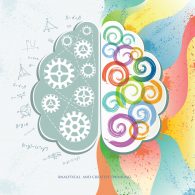A couple of weeks ago, I gave a group of HR leaders from diverse industries the task of design thinking performance conversations.
The parameters:
– A face to face discussion had to take place at least once a quarter
– There needed to be some type of record of the discussion
Everything else what up for redesign. The outcome was to prototype and storyboard a performance conversation framework that an employee would find beneficial and that managers would look forward to, or at least not see as a chore.
My group of 12 leaders was split into teams of 4. At the end of their 30 minute ideation, the results of their first prototype were surprisingly similar even with the groups working independently to create story boards.
The key drivers of the re-imagined performance conversations were:
Employee led
All three groups brought forward employee led discussion. The meetings would happen on the employee’s terms – at a time and location that worked for them.
Get outside
Bowling alleys, cafes, a park bench – these are a few of the locations suggested as part of the process. Getting away from the office to a neutral location with limited work distractions are ideal locations.
Apps first
Each group envisioned some type of dashboard to assist them in reviewing wins, check in on progress to goals – real time data was handy, current and accessible for the monthly check in. Other suggestions included 3 or 4 prompt questions to initiate discussions.
– I am proud of
– What I have achieved
– What I have learnt
– Support I need from you (my manager)
Whole person
The short conversations would include a ‘whole person’ check in and forward looking discussions: nest goals and developmental aspirations. These discussions were seen as a chance to check in for about 30 minutes, see where both parties were at, and what challenges lie ahead.
Rate your conversation
Some other great ideas that emerged were a ‘rate your conversation scale’ to help the manager become a better coach, a selfie to mark the occasion and post to social media, and capturing highlights, takeaways and actions resulting from the conversation.
The best part about the design thinking process is that it is iterative: Brainstorm ideas, create a prototype, test it out and iterate again. The key, though is to actively involve stakeholders in the process from the beginning. If we’re talking employee reviews, then it’s employees and their managers who need to design their optimal process. HR’s role is as facilitator.
I hope the participants in our workshop take some of these great ideas back to their companies and engage larger teams in building a bespoke process that puts the employee/manager relationship at the centre of performance conversations. Elements like these are the future of work.

As Chief Strategist of Analytic Perspectives, Audrey Ciccone consults in the area of workforce analytics partnering with companies to develop their HR analytics game plan.


